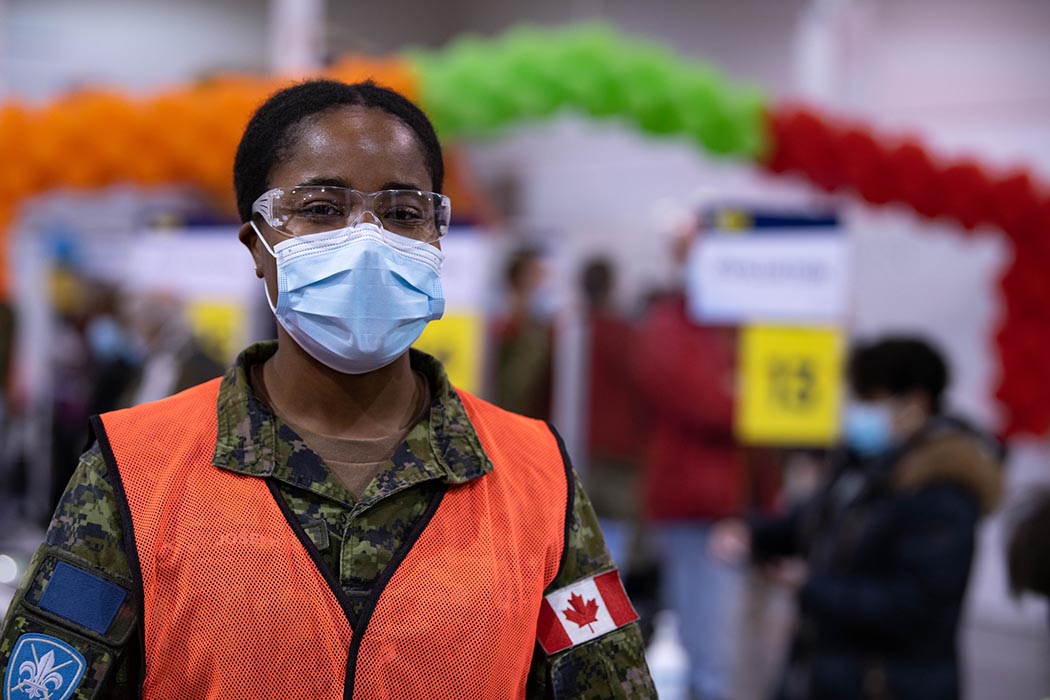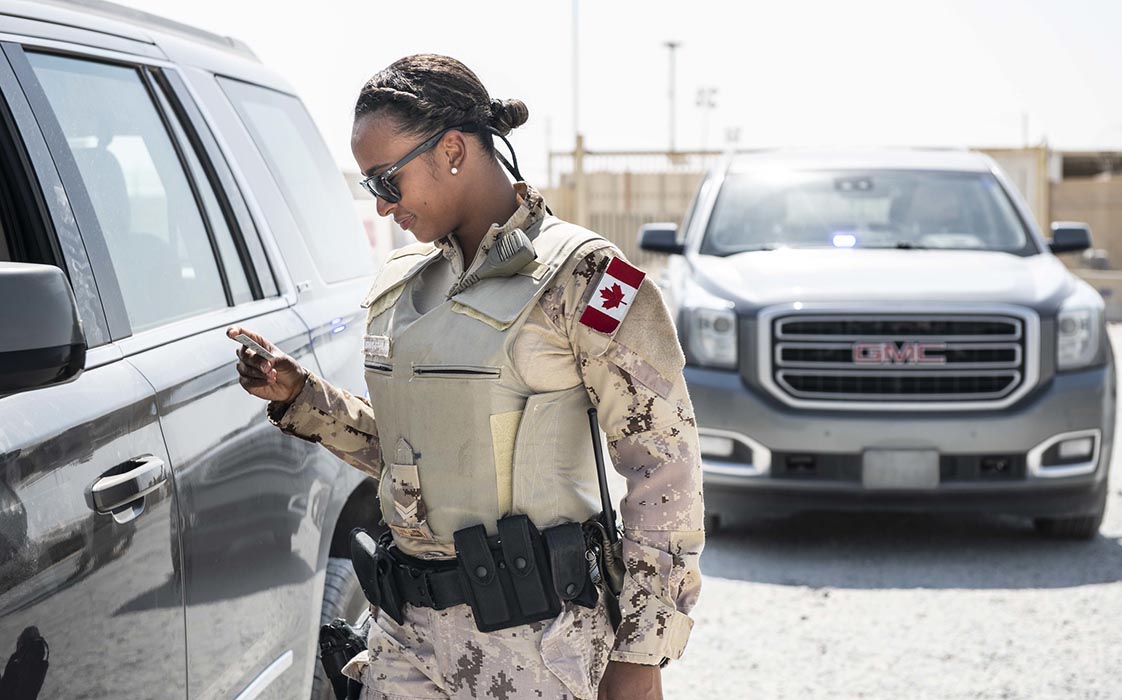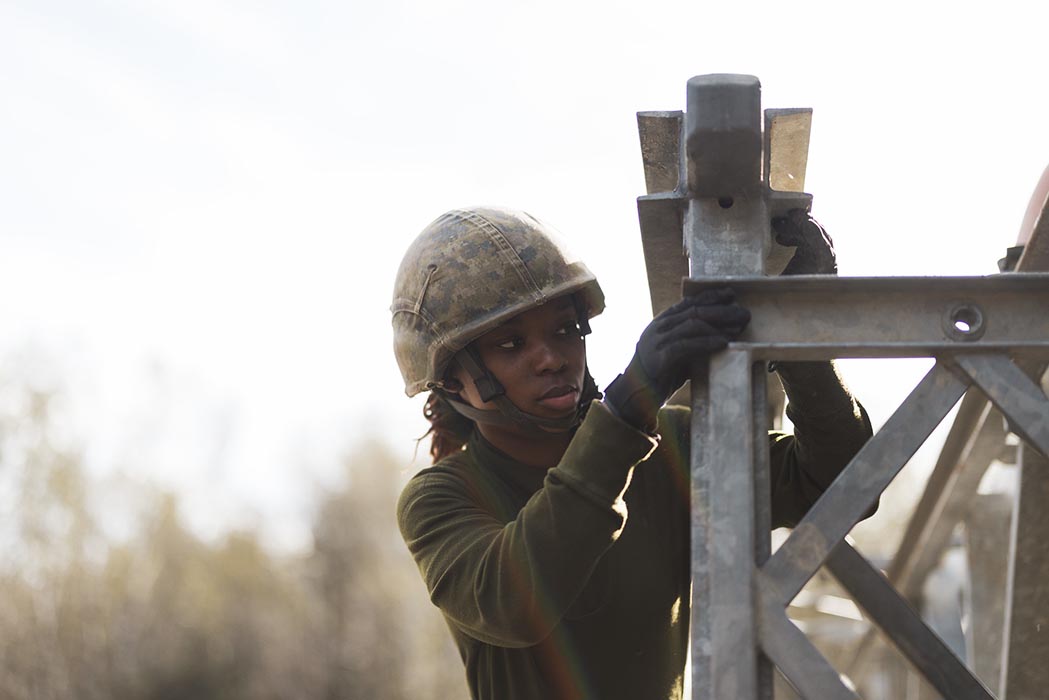Canadian Armed Forces ‘changing for the better’
Article / March 15, 2022 / Project number: 22-0015
Note: to view additional photos, click the photo under Image Gallery.
By Steve Fouchard, Army Public Affairs
Oromocto, New Brunswick — A long-time Canadian Armed Forces (CAF) member says that being a woman of colour in the organization has had its challenges, but diversity and inclusion initiatives are having positive effects.
“The world is changing,” said Warrant Officer Avril Jno-Baptiste-Jones, a member of 4 Engineer Support Regiment, based in Oromocto, New Brunswick. “Canada is changing, and the CAF is changing for the better.”
WO Jno-Baptiste-Jones shared her thoughts on a recent episode of the Canadian Army Podcast. Beginning with her basic training, she said, her superiors used patronizing language and even made jokes about her dark complexion.
“Initially, it was hard. I doubted myself. It pushed me to dream big, to keep moving.”
Dress standards of the day, she added, did not accommodate her natural hair.
“Natural hair is bulky hair. As black women with natural hair we could not meet those standards. Nobody understood what that meant.”
However, WO Jno-Baptiste-Jones said, the CAF culture continues to shift in positive directions, including evolving dress standards and inclusivity in general.
“We have gone leaps and bounds as far as these matters are concerned. I think there’s a lot of change coming. There are going to be good changes as far as including us.”
A number of measures to improve diversity and inclusivity within the CAF already in place include:
- The establishment of a CAF/Department of National Defence Anti-racism secretariat;
- Revised dress standards for Indigenous and Visible Minority Defence Team members;
- Canadian Army Order 11-82, which directs members to “act decisively to eliminate racism, discrimination and hateful conduct and assist in countering their spread”;
- The appointment of Defence Team Champions for Gender and Diversity on Operations;
- Developing a comprehensive Diversity Strategy and Action Plan to build a Defence Team that includes people from a broad range of cultural and linguistic backgrounds.
Trailblazing Women of colour
Women have faced many barriers to military service since the founding of the Canadian Nursing Service in 1901 – the first time women could serve as part of the regular Canadian military.
Women of colour faced an additional layer of discrimination, though a few blazed a trail for those, like WO Jno-Baptiste-Jones, who followed in their footsteps.
Minnie Eleanor Gray, a Black woman from Nova Scotia, was initially rejected when she attempted to enlist at the start of the Second World War. Though initially told her flat feet were the issue, it is likely that her race was a factor.
She was accepted after a second attempt and served as a nursing orderly and chaperone with the Canadian Women’s Army Corps (CWAC) Pipe Band in England, France, the Netherlands, and Belgium.
Following the war, she was honoured by the town of Wolfville, Nova Scotia with a certificate “in recognition of her patriotic spirit and noble sacrifices.
Ms. Gray’s scrapbooks from the time are now part of the Canadian War Museum’s collection, and illustrate her eagerness to serve.
“What a day and what a break,” she wrote in a diary. “I certainly never expected anything as perfect as that.”
Following the war, Ms. Gray put her skills to work as a civilian in the health care field. She passed away in 2005.
Marelene Clyke, another Nova Scotian, became the first Black woman from the province to enlist as a Reservist when she joined the CWAC in 1951 at age 17.
She was recognized by the Nova Scotia House of Assembly in 2017 with a motion to “congratulate Marlene Clyke and thank her for her service and her strength, and being an inspiration for all Canadians.” After a unanimous vote in favour, members paid further tribute with a standing ovation.


